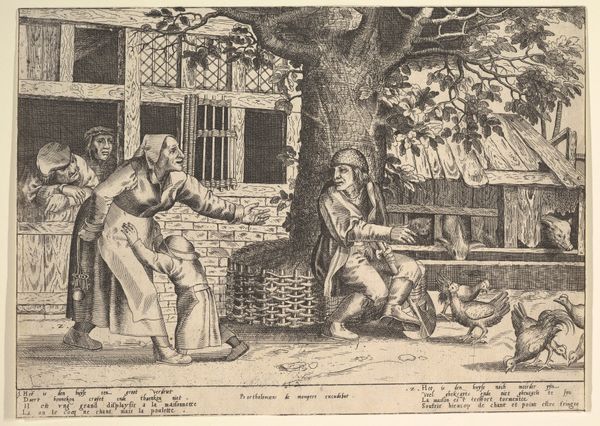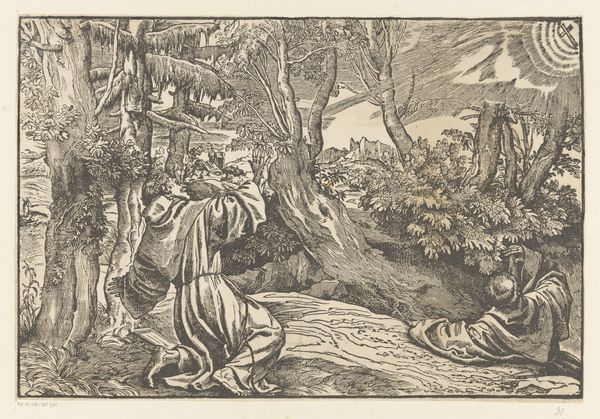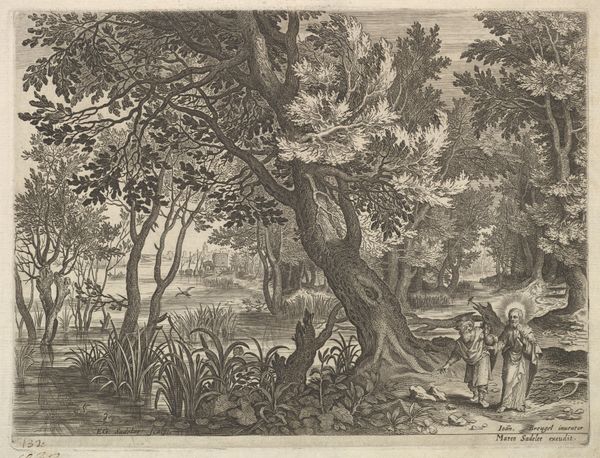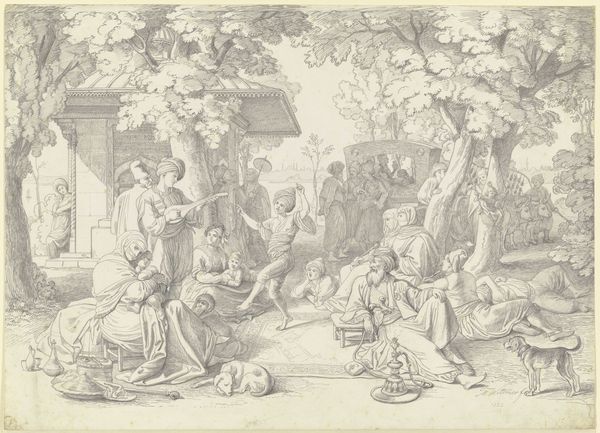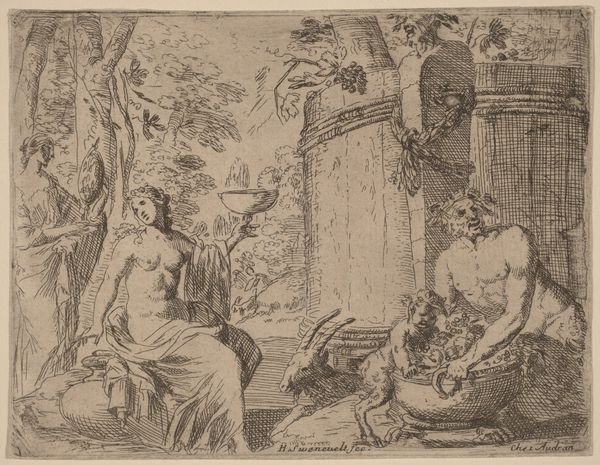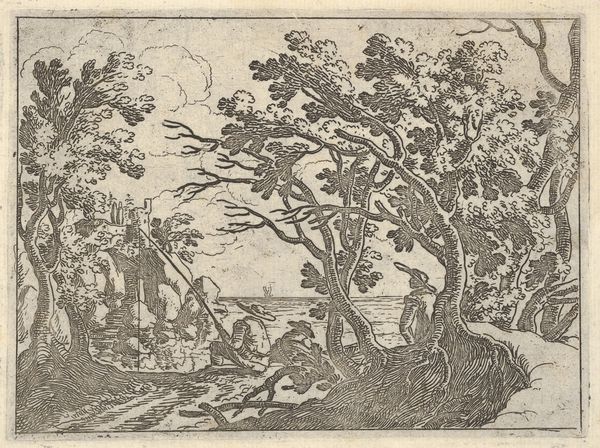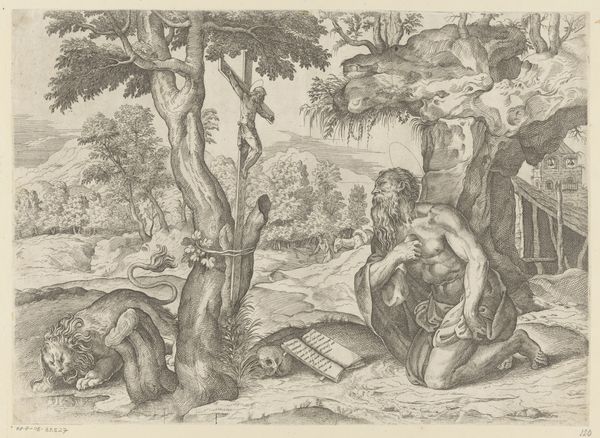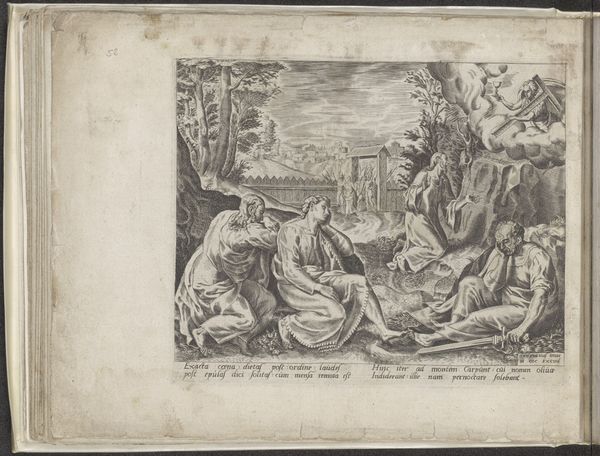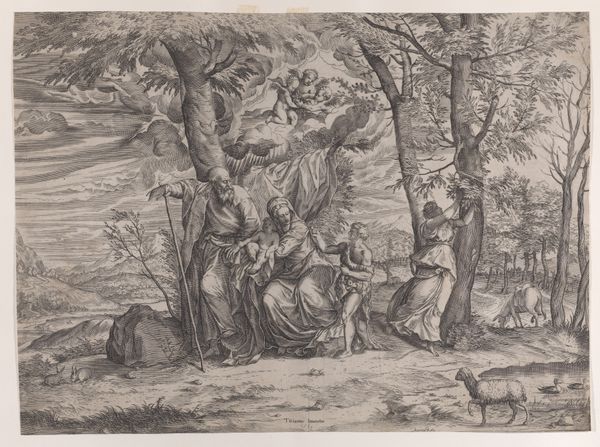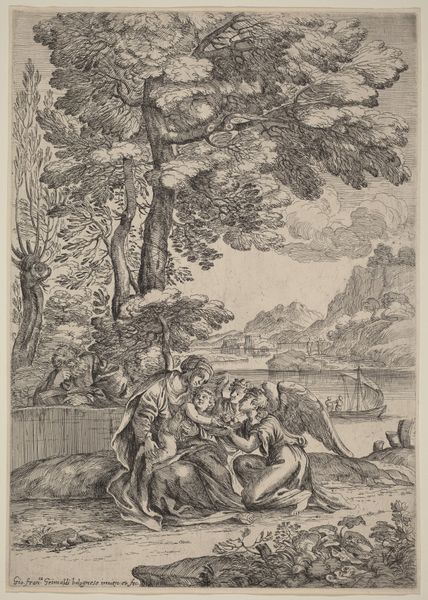
Achille reconnu par Ullysse (Achilles Recognized by Ulysses) (Furnishing Fabric) c. 1798
0:00
0:00
print, weaving, textile, engraving
#
neoclassicism
# print
#
weaving
#
landscape
#
textile
#
figuration
#
mythology
#
history-painting
#
engraving
Dimensions: 54.6 × 64.3 cm (21 1/2 × 25 1/4 in.)
Copyright: Public Domain
Editor: This is “Achilles Recognized by Ulysses,” a furnishing fabric from around 1798 by Favre, Petitpierre et Cie. It’s a neoclassical print, a textile… I’m struck by how narrative it is. What layers of meaning do you see woven into this seemingly decorative piece? Curator: More than decoration, I see it as a statement reflecting the political climate of the late 18th century. This is neoclassicism, yes, but why the turn to classical subjects at this moment? How might the story of Achilles, a hero caught between destiny and disguise, resonate with the anxieties of a post-Revolutionary society grappling with questions of identity and power? Editor: So, you're saying the choice of subject isn't just aesthetic; it's tied to the social context? Curator: Exactly. Consider the material itself—furnishing fabric. It’s designed for the domestic sphere, where ideas about virtue, citizenship, and heroism are subtly communicated. This fabric places the viewer in the middle of the discussion. What does it mean to cloak your home in a narrative of heroic identity at a time of immense political change and debate over moral order? Editor: That's a fascinating point. It's like surrounding yourself with a constant reminder of certain values. Is it an attempt to revive those values or perhaps reimagine them? Curator: Perhaps both. It uses mythology and history-painting but repurposes these genres for its contemporary audience, and raises fascinating questions about who had access to these kinds of symbols. We must look deeper, too, at its original production in the late 1790s to find out if there were statements around its sale that will help to shape our impression. It urges us to confront history’s active role in shaping our own. Editor: I hadn’t considered the intentionality behind the subject matter quite so deeply. I see now that it’s far more than just a pretty print; it is a layered engagement with history and identity. Thank you. Curator: Absolutely! Always ask *why* this subject, *why* this form, *why* now. It always leads to a richer understanding of art.
Comments
No comments
Be the first to comment and join the conversation on the ultimate creative platform.
